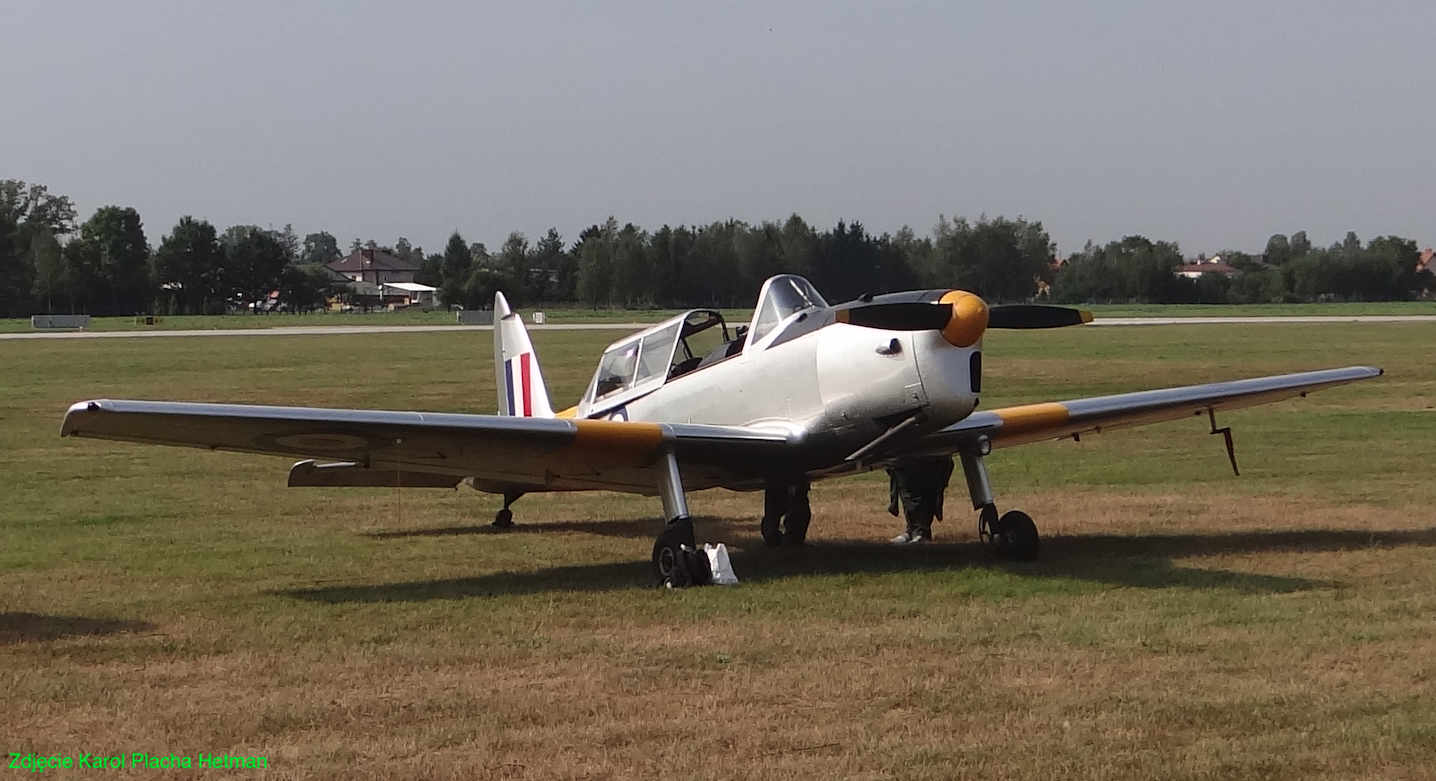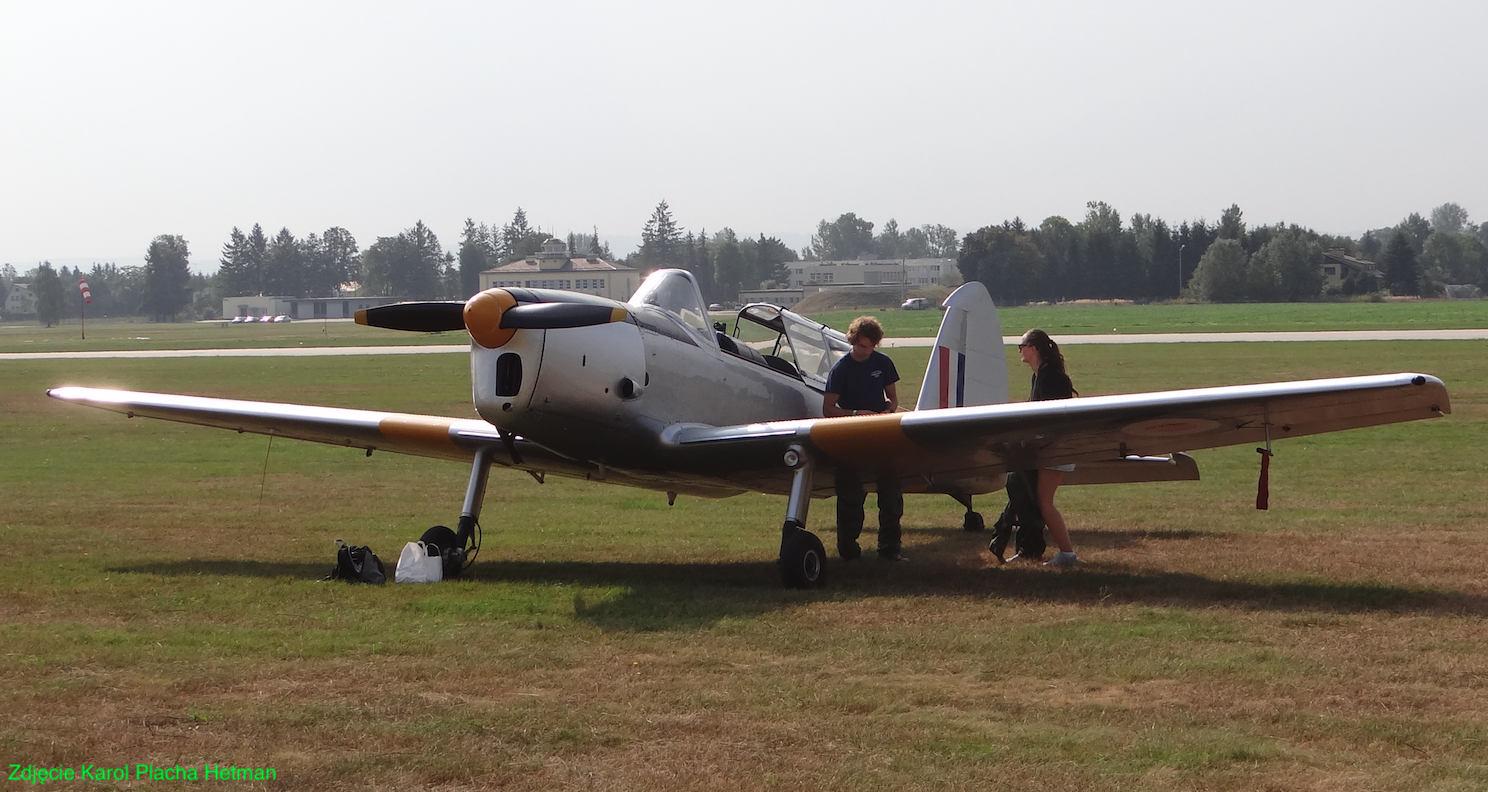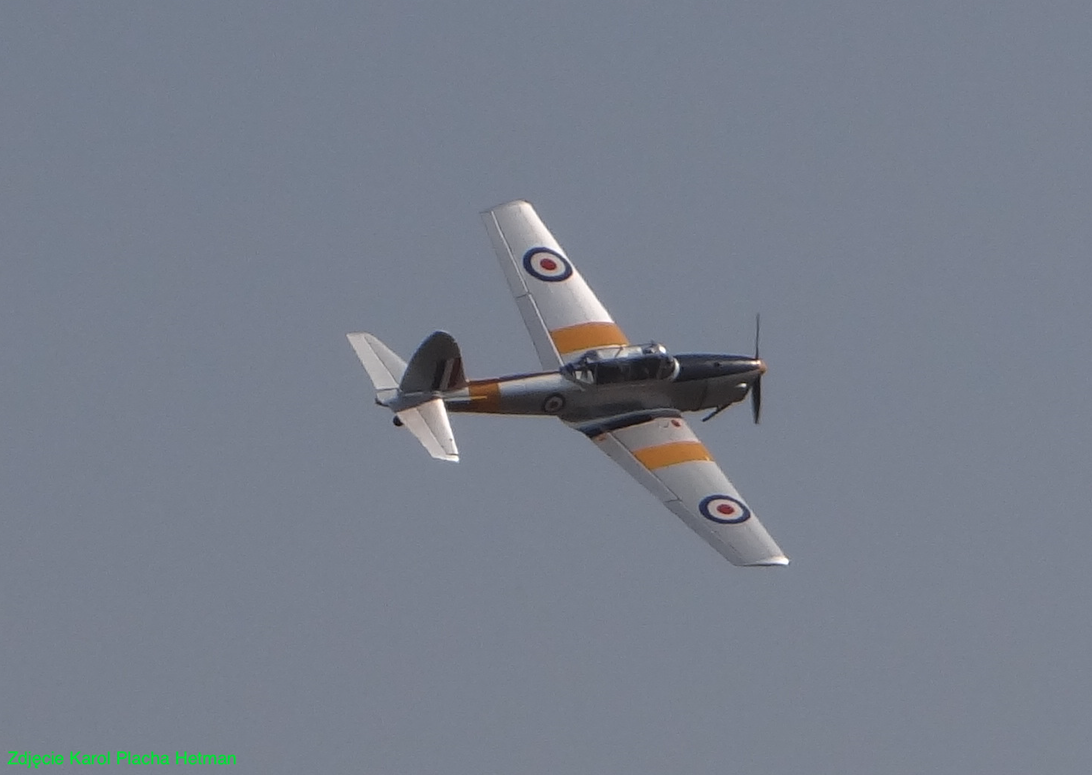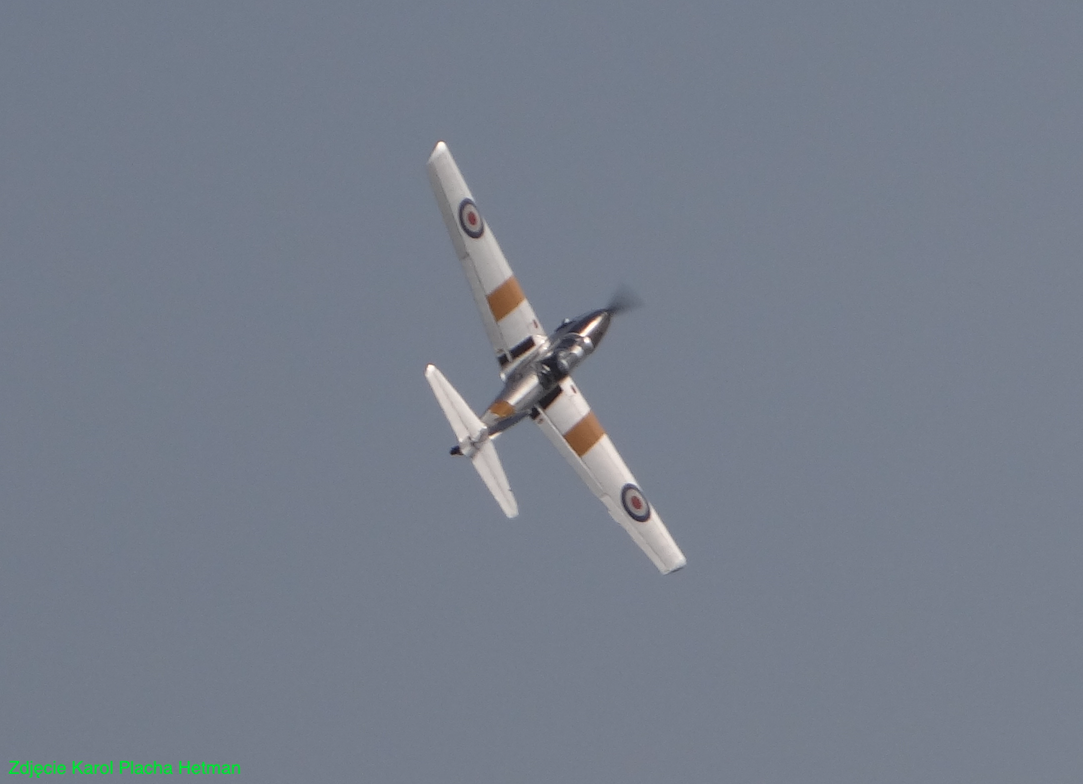Warszawa 2020-02-25
De Havilland Canada DHC-1 Chipmunk.
022b Section 1946-05-22
History



De Havilland Canada DHC-1 Chipmunk is a Polish aircraft, because it was built by Polish designers. The designers of the De Havilland Canada DHC-1 Chipmunk aircraft were engineers Wsiewołod J. Jakimiuk and Wiesław Stępniewski. Designer Wsievolod J. Jakimiuk is the main creator of the PZL-50 Jastrząb aircraft.
The de Havilland Canada DHC-1 Chipmunk is a light, two-seater training and training aircraft, built in the Canadian plants of the De Havilland concern. Over time, this aircraft has become the most popular training and training aircraft. The aircraft was produced for a long time in English plants and under license in Portugal.
The beginnings of the construction date back to 1940. Even then, the idea of a successor to the De Havilland DH-82 "Tiger Moth" biplane, which was already obsolete, was considered. Official work began in September 1945. When designing the aircraft, efforts were made to maintain a simple structure, easy ground handling, good visibility from the cabin, the possibility of mounting metal construction, tandem seats, fully covered cabins, fixed landing gear.
The prototype was built in Canada. The De Havilland Canada DHC-1 Chipmunk made its first flight on May 22, 1946. The pilot was W.P.I. Fillingham. The aircraft was transported by sea to England. Tests were carried out in England, which gave a good rating. The aircraft was prepared for serial production at the De Havilland Aircraft Company. The first serial aircraft was ready in September 1949 and made its first flight on 1949-11-14.
The De Havilland Canada DHC-1 Chipmunk aircraft was produced in many variations. There was an agricultural variety that received the designation MK-23. A plastic chemical tank with a capacity of 380 liters was placed in place of the front seat. The rear seat is positioned much higher for improved visibility.
In 1966, the Chipmunk aircraft was developed with a 100 HP Rower "Wolston" turboprop engine.
The de Havilland Canada DHC-1 Chipmunk was produced in the UK, Canada and Portugal. 218 aircraft were built in Canada. 60 aircraft were produced in Portugal, at Oficinas Gerais de Meteriel Aeronautica - OGMA. A total of 1,284 aircraft were built.
During many years of operation, the aircraft underwent many modifications. Single-seat versions were built. Engines changed. New cabin glazing was made.
In Canada, Poland, great test pilot Janusz Żurakowski flew a DHC-1 Chipmunk at the Airplane and Armament Experimental Establishment (A&AEE) at Boscombe Down.
There is a DHC-1 Chipmunk aircraft in Poland, registration SP-YAC. The plane was bought by Mr. Jacek Mainka. The aircraft was rebuilt in 2010-2014 in Great Britain.
Construction De Havilland Canada DHC-1 Chipmunk.

The de Havilland Canada DHC-1 Chipmunk is a two-seater low-wing monoplane with a metal structure. Trapezoidal, single-girder, metal leaf. The cover of the wing in the front is made of metal, the rest is covered with fabric. The wings are equipped with slotted flaps and slotted ailerons, similarly to flaps covered with fabric. The fuselage of the aircraft is made of metal, made of two parts. The front part ends behind the cockpit. Cabin covered. The tail of the plane is metal. Horizontal stabilizer covered with sheet metal, elevator covered with canvas. The vertical tail has a characteristic outline typical of the De Havilland design. Vertical stabilizer covered with sheet metal, rudder with fabric. Classic, fixed chassis. Engine - The base engine is an inline hanging piston, De Havilland "Gipsy Major IC", rated at 108 kW (142 hp).
Data T-T De Havilland Canada DHC-1 Chipmunk:
Span 10.46 m. Length 7.75 m. Height 2.16 m. Curb weight 535 kg. Total weight 875 kg. Top speed 225 km/h. Cruising speed 200 km/h. Landing speed 70 km/h. Climb rate 4.27 m/s. Maximum ceiling 5,240 m. Range 445 km.
Tally
The de Havilland Canada DHC-1 Chipmunk was produced in the UK, Canada and Portugal. 218 aircraft were built in Canada. 60 aircraft were produced in Portugal, at Oficinas Gerais de Meteriel Aeronautica - OGMA. A total of 1,284 aircraft were built.
There is a DHC-1 Chipmunk aircraft in Poland, registration SP-YAC. The plane was bought by Mr. Jacek Mainka. The aircraft was rebuilt in 2010-2014 in Great Britain.
Written by Karol Placha Hetman
